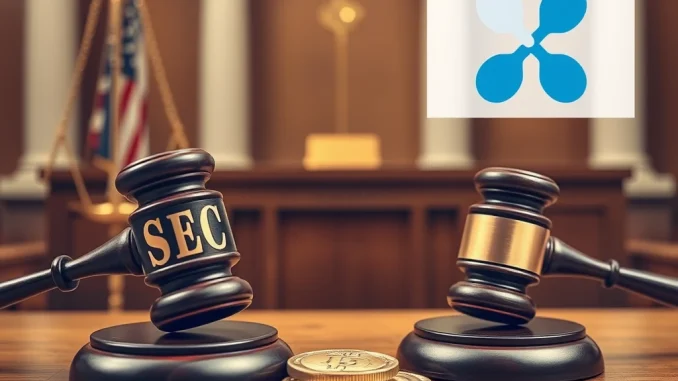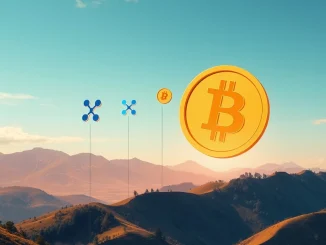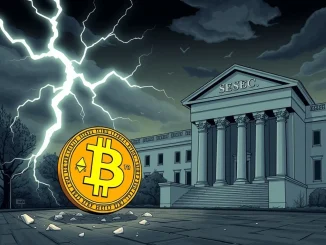
The long-running legal battle between Ripple and the U.S. Securities and Exchange Commission (SEC) saw a significant procedural development recently. For anyone following the market impact of the Ripple SEC case, understanding these nuances is key.
What Happened with the Ripple SEC Settlement Motion?
In a notable turn, Judge Analisa Torres denied a joint request from Ripple and the SEC. The parties had filed a motion seeking an indicative ruling on a proposed settlement. Judge Torres deemed this motion ‘procedurally improper,’ effectively putting the brakes on that specific path towards resolution.
The proposed settlement itself involved the SEC agreeing to significantly reduce Ripple’s potential fine from an initial $125 million down to $50 million. It also aimed to lift restrictions on Ripple’s direct sales of XRP. This motion was filed on May 9, according to reports from former federal prosecutor James K. Filan on X.
Understanding the Context: The XRP Lawsuit
This settlement attempt stems from the core XRP lawsuit initiated by the SEC. A pivotal ruling in 2023 determined that Ripple’s institutional sales of XRP constituted unregistered securities offerings, while its programmatic sales on exchanges did not. This split decision created a complex landscape for potential settlement discussions, as the parties sought to finalize penalties and future operating conditions based on that ruling.
Why Was the Proposed Ripple Settlement Denied Procedurally?
Judge Torres’s denial was not a judgment on the fairness or terms of the Ripple settlement itself. Instead, it was based purely on the procedure used. An ‘indicative ruling’ is typically sought when a case is on appeal, asking the original judge if they would change their ruling if the case were sent back. Since the main case is still before Judge Torres and not on appeal, she found the motion seeking such a ruling inappropriate for the current stage of litigation.
Judge Analisa Torres’s Role in the SEC v Ripple Case
Judge Analisa Torres has presided over the complex and closely watched SEC v Ripple case for years. Her detailed 2023 summary judgment ruling provided crucial clarity on the different types of XRP sales. Her recent denial highlights her focus on maintaining proper legal procedure within her courtroom, ensuring motions align with the current status of the case rather than anticipating future scenarios like an appeal.
What Does This Mean Moving Forward?
The denial of this specific motion doesn’t necessarily end settlement possibilities between Ripple and the SEC. It simply means they cannot use this particular procedural mechanism to get the judge’s pre-approval on the settlement terms while the case is still active at the district court level. The parties will need to pursue a different procedural path if they wish to finalize a settlement, potentially through standard motion practice or a formal settlement agreement submitted for court approval at a later stage.
This development underscores the ongoing complexity and procedural hurdles in high-stakes cryptocurrency litigation. While the core issues from the 2023 ruling remain, the path to a final resolution continues to involve intricate legal maneuvers.
Conclusion
Judge Analisa Torres’s decision to deny the joint Ripple-SEC motion for an indicative ruling marks a procedural setback in the path towards a potential settlement. The denial was based on the motion being procedurally improper for the current stage of the XRP lawsuit, not on the merits of the proposed settlement terms themselves. As the SEC v Ripple case progresses, market participants and legal observers will be watching closely to see how the parties navigate the remaining procedural steps towards a final judgment or an eventual resolution.




Be the first to comment